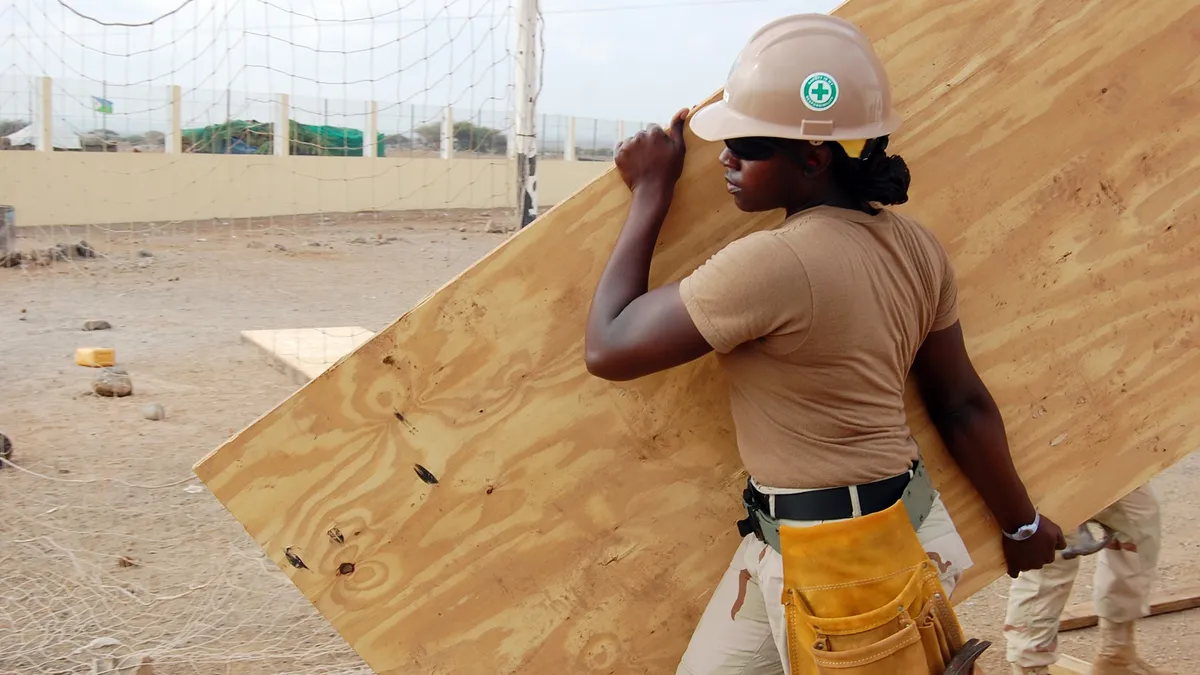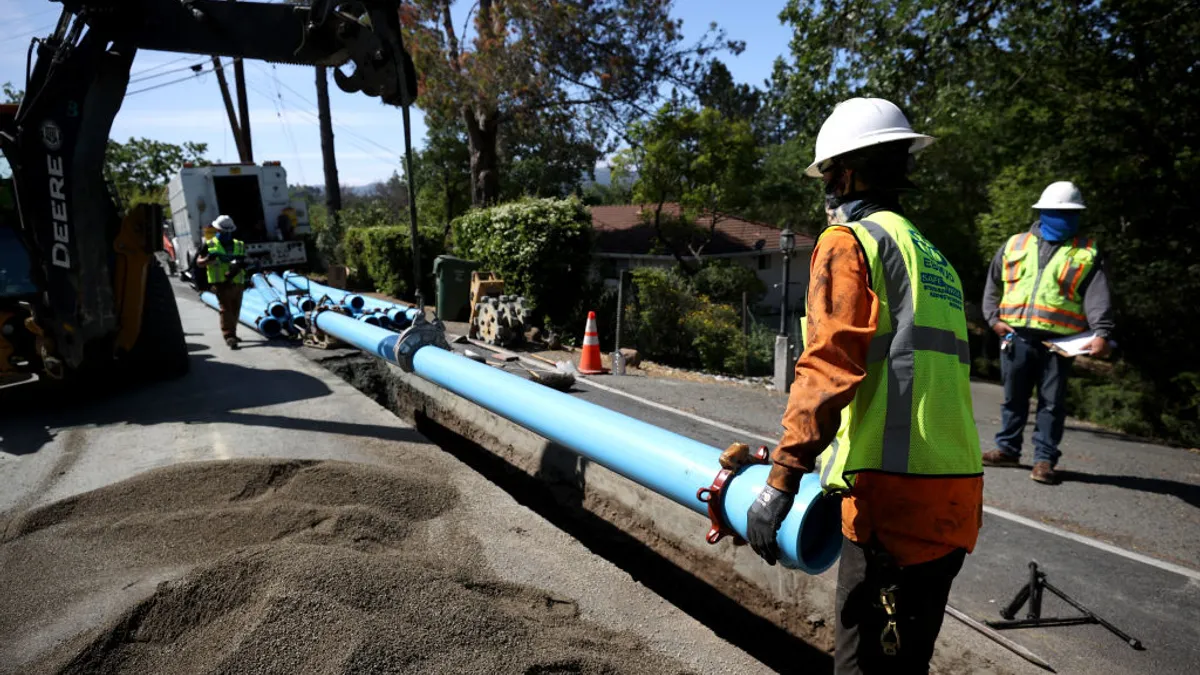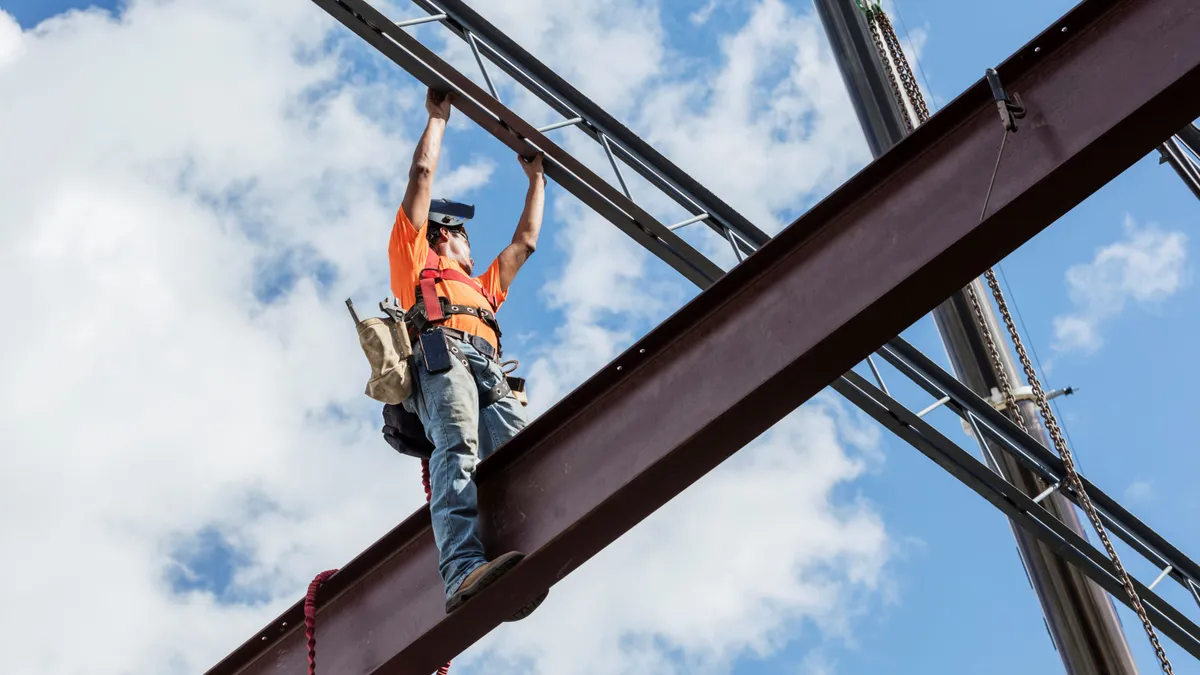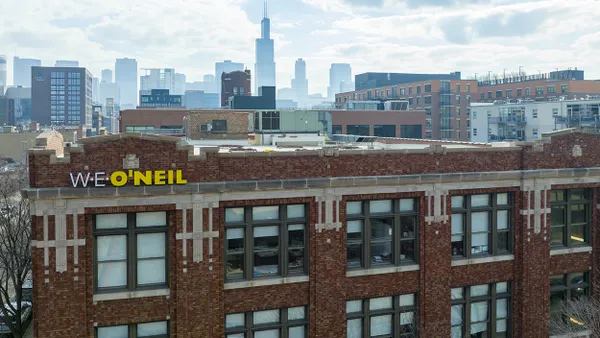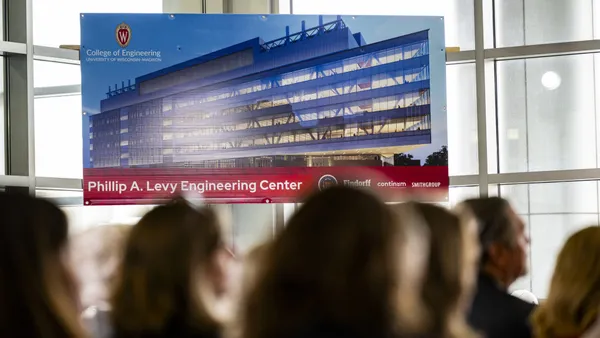Though women are a growing presence on the jobsite, it’s no secret that construction remains male-dominated. If that’s going to change, there must be a collaborative effort to make the industry attractive to all, said panelists at the National Association of Women in Construction Puget Sound's diversity, equity and inclusion event on Tuesday.
Women account for only 11% of workers in construction overall, according to a recent Fixr report, although their numbers have risen 50% in the past decade. In the field, however, the gender disparity is even more stark: Only 3% to 4% of jobs in production, transportation, construction and maintenance are occupied by women. Women are underrepresented in leadership as well, according to Fixr, making up 17% of management and professional workers.
Barriers to construction diversity include resistance from gatekeepers, lack of authentic outreach and an industry infrastructure that is slow to innovate, according to Michigan-based Brown Construction Collective + President and CEO Rita Brown. That’s in addition to a historically White and male-dominated work culture that can be unwelcoming to people with different identities.
Why women don’t enter, advance in construction
“We still have a lot of non-inclusive behaviors, especially in the field, in the construction industry,” said Jeanette McArdle, project executive with Bellevue, Washington-based Associate Prime Electric. “Workplace harassment, bullying, violence [and] creating hostile environments tend to drive what could be really quality, diverse talent away because they don’t feel safe.”
Culture in the industry is slow to change, she said, and some commonly used terms are not gender-inclusive. For example, she’s a member of the International Brotherhood of Electrical Workers, and union members are asked to refer to themselves as a journeyman or a wireman.
“These terms that we use tend to be less inclusive,” McArdle said. “I would like to see change start there. It’s a small place, but those words have a lot of meaning.”
The panelists also spoke about how potential employers discriminate against women in the hiring process because they assume they may get leave the workforce to take care of children. During the pandemic, it was mostly women who left their jobs to care for children. Women disproportionately handle caregiving duties, and miss out on advancement opportunities as a result.
For both women and men, a lack of proper sanitation facilities on the jobsite can be a hardship and a deterrent to staying in the industry.
Although sanitation improved during the pandemic, many jobsites are regressing to how it was before, Colorado Springs, Colorado-based Frontline Floor Coatings President and CEO Ally Jencson said. For one, jobsites need bigger portable toilets for people who are pregnant, as it’s difficult to navigate a standard model with a big belly, she said.
“Get your company to understand that renting an extra port-a-potty isn’t going to break the budget,” Jencson added.
Inclusion without tokenization
What companies seeking to be inclusive should not do is show off “diverse” workers without offering support and sharing power, said Shannon Tymosko, electrical apprentice with International Brotherhood of Electrical Workers Local 105 in Ontario, Canada. People want to be remembered for their work, not feel like they’re there to fill a quota.
“‘Culture add’ is essential in the workplace, and not ‘culture fit,’ because that’s how we unlock and maximize our personal and business gains,” said Jennifer Morales, underwriting consultant with Chicago-based CNA Insurance. “It’s recognizing the potential in the individual.”
To create enduring change, leadership has to be all-in and make an organizational investment to the effort, said Melanie Ryan, CEO of Seattle-based MFR Coaching and Consulting. That means taking action, evaluating progress and providing sufficient resources. Men in power also have to recognize women’s value and boost women into leadership roles, the panelists said.
“Many have a surface-level commitment to doing this work, and this is not surface-level work. This is deep, ongoing, lifelong work, both personally [and] professionally,” Ryan said. “The most difficult thing is really getting people to understand the commitment that goes with it and make the investment to do it."



